Masinde Muliro University of Science and Technology’s School of Disaster Management and Humanitarian Assistance (SDMHA), has championed the re-imagination of natural hazards and disaster preparedness during a nine-day extensive experiential learning for its students pursuing Degree and Diploma programs for a more sustainable future. The exercise, which was conducted from 30th April to 4th May 2024 for Degree and 6th to 9th May 2024 for Diploma students, was organized by the Dean SDMHA, Dr. Ferdinand Nabiswa. The practicum carried out in Budalangi was made possible by various facilitators from recognized institutions in the country.
This compulsory practical component of the second semester of the second year of studies is undertaken before the students go for industrial attachment. It is geared towards providing the students with a practical understanding of disaster management and humanitarian assistance principles. These principles include; applying theoretical knowledge to a real-world scenario for disasters, developing critical thinking and problem-solving skills in a harsh environment, enhancing teamwork and communication skills while collaborating with others towards a common goal, gaining first-hand experience in the decision-making process during a simulated disaster, as well as understanding the humanitarian situations in the Internally Displaced Persons (IDPs) rescue centers.
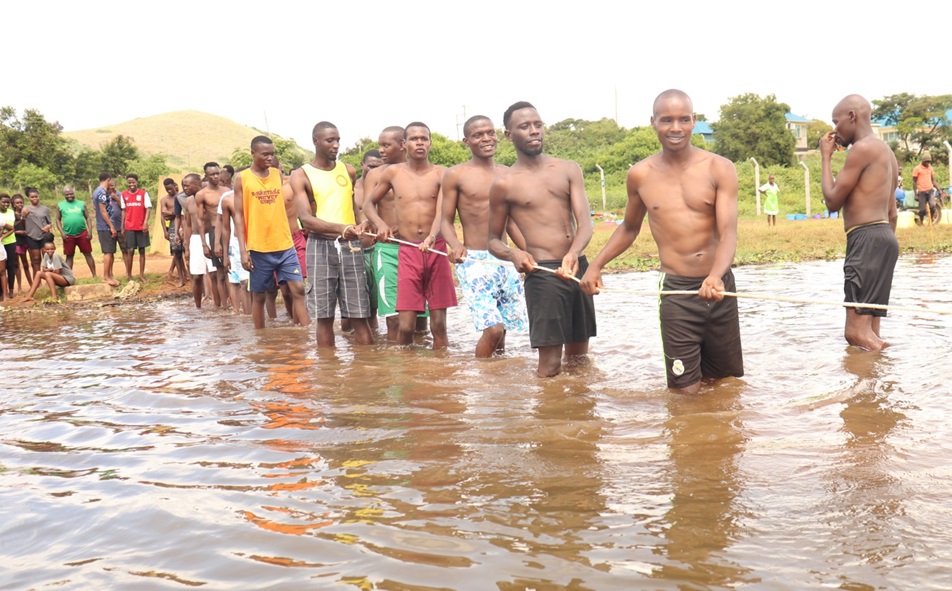
Students getting ready for water rescue practice.
Speaking during the exercise, Dr. Nabiswa noted that the SDMHA is determined to be the leader in the disaster management and humanitarian assistance sector. “This is an opportunity where the students get to interact with the industry players and the community, as well as a platform for marketing the University. The exercise has borne fruit due to the level of exposure and change of attitude in the students. We have been receiving positive feedback from the industries regarding the performance of our students. I thank the University management for being supportive towards the seamless exercise,” he said.
In addition, he revealed that five (5) third-year students from SDMHA have been actively participating in the current floods rescue mission; four (4) in Nairobi with the Kenya Red Cross Society and one in Somalia. “These intensive activities, which are also designed to address emerging problems in the industry, have fully equipped our students and effectively put MMUST on the frontline of global disaster management and humanitarian assistance training. We are proud of the skills of our products,” he stated.
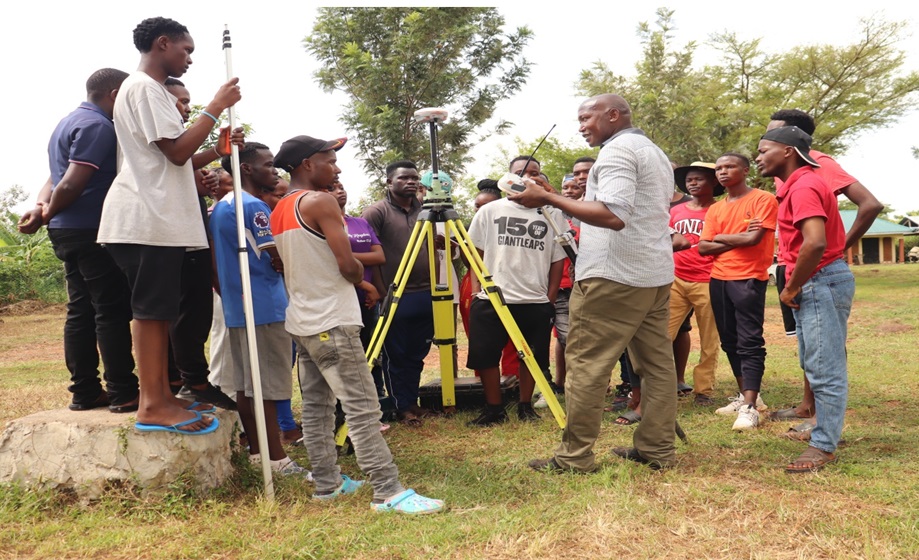
The Kakamega County GIS expert, Mr. Stephen Wasike taking the students through the Disaster Impact Evaluation.
The Kakamega County Geographic Information Systems (GIS) expert, Mr. Stephen Wasike took the students through the Disaster Impact Evaluation by the use of GIS and Global Positioning System (GPS). Mr. Wasike agreed that the students should understand that GIS can be used as a tool to solve every problem to improve livelihoods. He added that hazard mapping is the key to finding a long-lasting solution to the perennial floods in Budalangi as well as the areas that are prone to floods. “This is a timely venture when the country as well as the globe is experiencing harsh living conditions caused by climate change. The floods are a major problem at the moment. Let us embrace the use of GIS to save the globe. The society needs the young generation to curb the menace,” stated Mr. Wasike.
Taking the students through the First aid techniques, the Chief Executive Director of iCare Foundation- Mr. John Kariuki, advised the students to observe danger when conducting the Doctor’s ABC. He echoed the Dean’s sentiments saying that the practicum is crucial for the students before joining the competitive job market. “The students will utilize the skills to enable them to improve their lives, educate the community, and save other people’s lives,” he said.
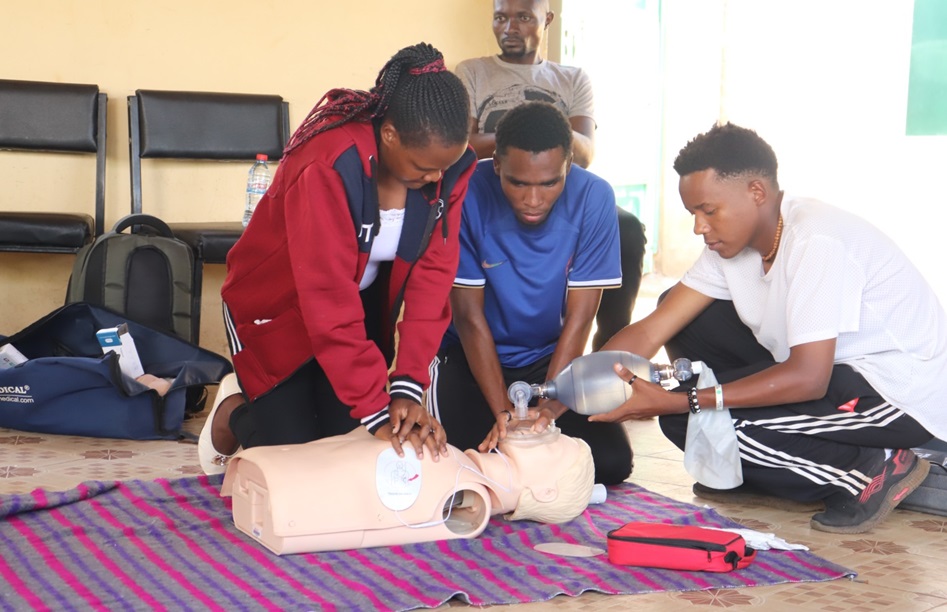
A section of the students practicing first aid techniques during the exercise.
The Chief Inspector of Crime Scene Management, Directorate of Criminal Investigations Kakamega- Mr. Daniel Marube tackled Crime Scene Management which involves cordoning, documentation, crime scene log, and sketch plan. He encouraged the students to ensure their safety when documenting a crime scene. Further, he emphasized the use of sketch plans as they can be used in a court of law.
The Chairperson of Department (CoD), Disaster Management and Sustainable Development- Dr. Nicodemus Nyandiko acknowledged that the experiential disaster management exercise served as a successful learning experience for the students. The exercise highlighted the importance of the practical application of theoretical knowledge and underscored the complexities of real-world disaster response. “By identifying the areas of improvement, the exercise can be incorporated into future disaster management programs for better preparation of future disaster responders,” he said.
The CoD Emergency Management Studies- Dr. Nicholas Ombachi pointed out that disaster experts should be in a position to identify the root cause of a disaster to come up with possible remedies. “This exercise will enable the students to curb future challenges. It is my delight to see my students participate in the rescue mission. This is only possible if they acquire the necessary hands-on skills expected of them by potential employers,” he stated.
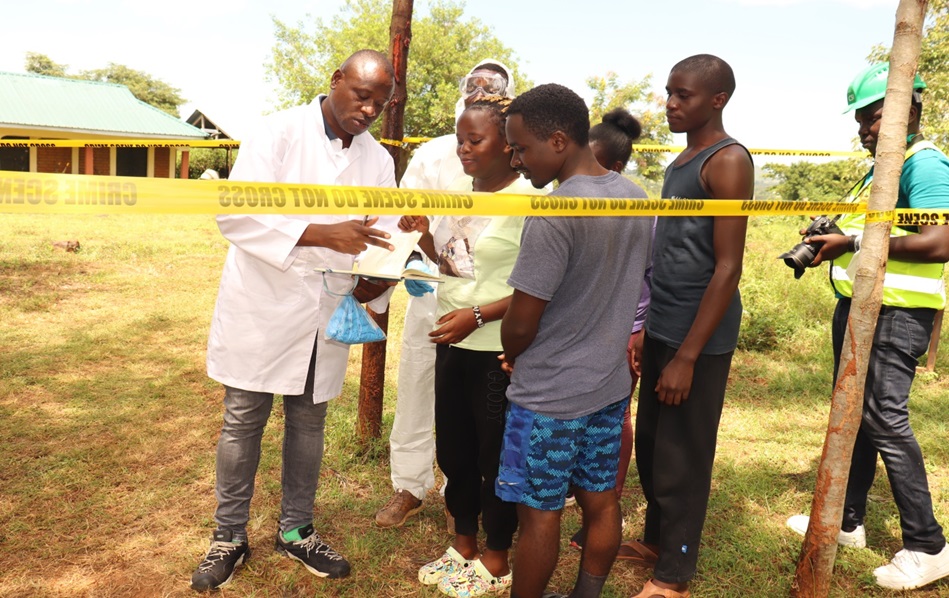
The Chief Inspector of Crime Scene Management, Directorate of Criminal Investigations Kakamega- Mr. Daniel Marube tackling Crime Scene Management.
The school Examinations Coordinator, Dr. Angela Mayio acknowledged that the theoretical background done in class is not enough and has to be complemented with the experiential learning activities, to translate into actual skills that are demanded in the job industry.
“This practicum is conducted to usher the students to the reality of life. It is a real experience of disaster management and humanitarian assistance training,” she stated, adding that the students are assessed during the exercise and are expected to submit a report after the practicum to ensure maximum cooperation.
The exercise covered various activities including; Search and Rescue Techniques in various disaster scenarios, Teambuilding, First-Aid Practice and Trauma Management, Disaster Impact Evaluation, Solo exercise, as well as a Visit to Mabinju IDP camp where the students offered an assortment of donations ranging from clothing to foodstuffs.
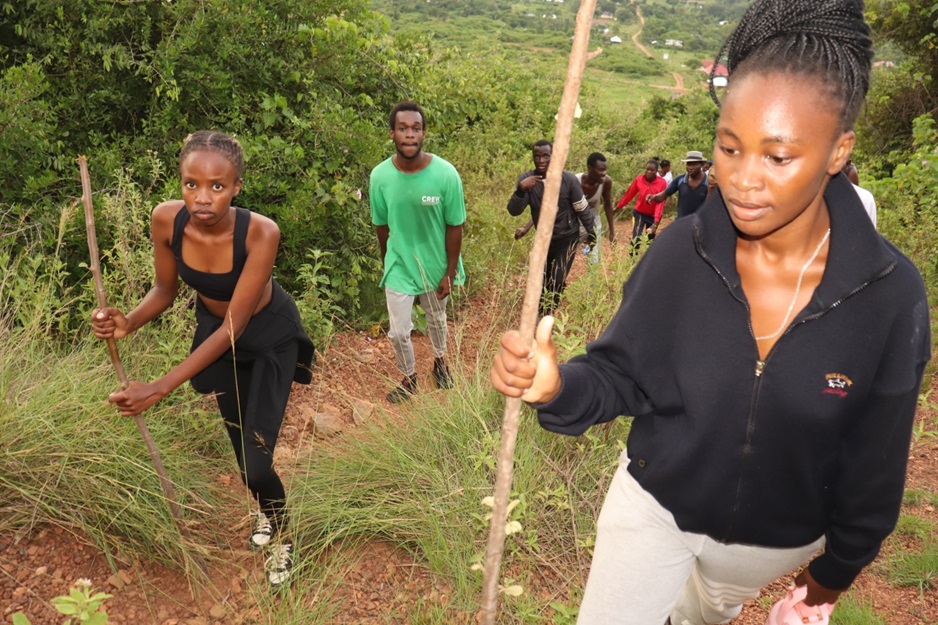
A section of students during hiking.
Notably, to enhance the practical sessions for the students pursuing disaster related programs, SDMHA commissioned staff from the departments of Emergency Management Studies, Disaster Management and Sustainable Development, Peace and Conflict Studies, as well as Disaster Preparedness and Engineering Management. Some of the staff included; Dr. Betty Opilo, Dr. James Omondi, Dr. Graham Amakanji, Mrs. Janerose Kimuma, Mr. Leonard Nyongesa, Mr. Japheth Ogenga, Mr. Dennis Otwori and Mr. Peter Otsianda. The physical fitness sessions were facilitated by the staff from the department of Health Promotion and Sports Science; Mr. Evans Walubengo and Mr. Dismus Otieno.
Clearly, MMUST is ensuring that the content provided to its students is enhanced through such practical sessions as well as through basic disaster management skills. This practicum will be effective in equipping students with practical skills of disaster management and humanitarian assistance.
Story and photos by Verna Awuor





